Foundation Grant Awards
The WSST Foundation is proud to present the following grant winners acknowledged at the 2023 Milton Pella Banquet.
Founders Grant
This $1000 grant can be used to reimburse costs of professional development.
Lisa Swaney, Horwitz-DeRemer Planetarium, School District of Waukesha Stars for All Planetarium Conference


Milton Pella Grant
The Milt Pella Grant supports the professional activities of our members.
Horowitz Planetarium, Waukesha
Who's Ready for Laser Camp?
The Horwitz-DeRemer Planetarium will be using the grant to build Laser camp - an effort to explore the science of lasers/light through development of a show.
Sarah Ludwig, Woodworth MS, Fond du Lac
The Internet of Things
Students in the coding club at Woodworth Middle school will create projects and learn how to integrate programming, design and prototyping into science, technology, engineering, art and math using microcontrollers and sensors.
Susan Jurries, Arbor Vitae-Woodruff School Snap Circuits
Combining the genius circuitry system of Snap
continued on page 4
From the President
WSST President, Kristin Michalski
We definitely accomplished “Capitol-izing on Innovation” at this year’s WSST Conference at the Monona Terrace in Madison. Thank you to Patrick Mootz and Corinne Michor for your efforts in creating a transformative experience for our members. You led an outstanding team of individuals and I thank the conference committee for their efforts as well. Hopefully you felt welcome the moment you arrived at Monona Terrace; we definitely wanted to touch base with all of you in one way or another. There were almost 200 sessions/events at this year’s conference. The success of the conference depends on individuals willing to share their expertise. Thank you to all of the presenters! Next year,
continued on page 4
Inside this Issue!
Page 1 President’s Address, Foundation Grants
Page 6-7 2023 WSST Awards
Page 9 2023 WSST Election Results
Page 10-13 Conference 2023 Pictures
Page 14-15 WSST Essay Content Winners
Page 16-20 WSST Member Submissions
Page 22 WSST Baseball!
Page 23-25 Science News and Opportunities
Page 26-27 NASA’s Night Sky Notes
Summer 2023 Vol. 64, #4
The Wisconsin Society of Science Teachers
Our Mission: Promoting, supporting and improving science education in the state of Wisconsin.
Our Vision: The Wisconsin Society of Science Teachers will carry out its mission of promoting, supporting and improving science education in the state of Wisconsin by providing leadership, advocacy and programs to enhance the teaching and learning of science.


WSST Advertising Rates
Full page ads: $250
Half page ads: $150
Quarter page ads: $75
1” Bottom page banner: $40 Business card: $25
WSST Directory, 2022-2023
Kristin Michalski, President mickri@easttroy.k12.wi.us
Matt Lindsey, Past President mlindsey@mosineeschools.org 715-321-3291
Stephanie Baker, Secretary bakeste@wc.k12.wi.us
Kevin Niemi, Chief Financial Officer kjniemi@wisc.edu
Tammy Dymesich, Chief Operating Officer coo@wsst.org
Erik Duhn, District 1 (CESA 11 & 12) e00drik@gmail.com
Brad Wysocki, District 2 (CESA 9 & 10) bwysocki1978@gmail.com
Dennis Rohr, District 3 (CESA 7 & 8) drohr@seymour.k12.wi.us
Jonathan Baker, District 4 (CESA 3 & 4) bakejon@wc.k12.wi.us
Sara Krauskopf, District 5 (CESA 2 & 5) district5@wsst.org
Teri Dillenberg, District 6 (CESA 6) teridillenberg@hasd.org
Cody Smith, District 7 (CESA 1) cody.smith@nbexcellence.org
10% discount on two or more of identical ad in current volume
Advertising must be submitted to editor in camera-ready form or electronically, with check or money order (payable to WSST)
Page 2 Spring WSST Newsletter
WSST Committees
Awards/Recognition
Miranda Dahlke (co-chair) Laura Ramthun (co-chair)
Tom Davies Nancy Smith Stephanie Bartels
Michelle Howe Jennifer Bault Karen Messmer
Sue Whitsett
Document Review
Terry Schwaller (chair)
Dave Bergerson Sue Whitsett
Elementary Education
Marcia Gardner (co-chair) Shelly Petzold (co-chair)
Tanzeem Ali Melissa Wimmler Teri Dillenberg
Leah Alburt
Equity and Access
Kevin Anderson (co-chair) Sara Krauskopf (co-chair)
Kelly Steiner Amy Zientek Dennis Rohr
Zach Pratt Kristin Michalski Lalitha Murali
Karen DeShong Karyl Rosenberg
Finance
Kevin Niemi (chair) Matt Lindsey Terry Schwaller
Foundation

Brian Bartel (President)
Denise McCulley (1st Vice-President)
Carol Ochsner (2nd Vice-President)
Dale Basler (3rd Vice-President)
Tracy Swedlund (Treasurer) Ray Scolavino (Secretary)
Higher Education
Joel Donna (chair)
Mike Beeth Kevin Mason Lynn Diener
Josephine Mitchel
Membership
Michelle Griffin-Wenzel (chair)
Ray Scolavino Tracy Swedlund Deanna McClung
Nominations and Elections
Kathy Biernat (chair)
Mary Ellen Kanthack Zach Pratt Dan Nelson
Professional Development
Chad Janowski (chair)
Kevin Anderson Sarah Adumat Shelley Petzold
Deana Johnson Jamie Groark Sonja Gasper
Stacey Strandberg Andrea Christianson
Publications

Brian Bartel (co-chair) - Newsletter Editor
Julie Fitzpatrick (co-chair) - Website
Sarah Adumat - Newsletter Copy Editor
Karyl Rosenberg - Historian
Tracy Swedlund Dan Nelson Dale Basler
Strategic Planning
Matt Lindsey Ray Scolavino Kevin Niemi
Kristin Michalski
WESTA
Shannon Previte (chair)
Dennis Rohr Margaret Guderyon Ben Sanderfoot
Beth Allcox Ken Budill Chad Wilkinson
WSELA
Kevin Niemi (co-chair) Kevin Anderson (co-chair)
WSST Conference Chairs

Corinne Michor and Patrick Mootz, Madison 2023
Marcia Gardner and Tim Sprain, LaCrosse 2024
WSST Conference Director WSST Vendor Coordinator
Ray Scolavino Rodney Dymesich
Summer WSST Newsletter Page 3 SHARE YOUR THOUGHTS. To submit a letter to the WSST Newsletter, send your thoughts via e-mail to newsletter@wsst.org Content may be edited for length, clarity and appropriateness.
Newsletter Archive Visit www.wsst.org/newsletter to download past issues of the WSST newsletter. Available from 2002, all newsletters are in Adobe PDF format.
WSST
President continued from page 1
please consider presenting especially if you are an elementary level teacher or a chemistry or physics teacher. Thank you to our exhibitors and Rod Dymesich for all the work you do in the background to make the vendor hall an invaluable resource for all. Remember you can still access materials indefinitely from the conference app at https://wsstconference2023.sched.com/
tions and we hope you will share your project successes at next year’s conference in La Crosse.

One of the major highlights of the social events was the tailgate party on Thursday night. It was great to see so many members getting into the spirit of the bags competition and interacting with each other. The social committee outdid themselves this year to make a fun and safe space for networking with our fellow colleagues. The sense of community between members was strong at each event.
Congratulations to this year’s award winners and essay contest winners. There were also several Front and Center Grants awarded at the conference; congratula-
We have some new leadership coming in this year. I would like to welcome Jayne Ryczkowksi, former secretary, to the new position of District 3 Director, Tom Davies as the new District 2 Director, and finally, Dennis Rohr as President-Elect. WSST is grateful for your willingness to volunteer your time and expertise to our organization. We are stronger for it. Your District Directors are looking to plan future events so be on the lookout for these in the coming months. These opportunities will come through your email as part of our Impact newsletters or as a separate message. Let us know if you have an idea for an event. If you would like to volunteer your time to the organization, please email me at president@wsst.org. As I have said before, WSST is a volunteer organization and is only as good as its volunteers. Lastly, I would like to take this opportunity to thank COO, Tammy Dymesich and past president, Matt Lindsey for all their help and guidance as I maneuvered into the new position as president. They have been indispensable to my transition.
Save the Date! Driftless
Wonders: Conference 2024 in LaCrosse, April 18-20
Save the date! Our next WSST conference will be held in LaCrosse on April 18-20, 2024. We look forward to seeing you there!
Page 4 Summer WSST Newsletter
Grants continued from page 1
Circuits with open-ended brick construction, Susan’s students will build amazing structures that cleverly light up, make noise, and bring creativity to life.
Cindy Barber, Random Lake School District
One Seed
Cindy will be starting a school garden to support 4K-12 multi curricular academics, nutritional, physical, and mental health advantages, while inviting the community to grow with them.
Jacquelyn Drews, Randolph High School
CAPP Biology Certification
Jacquelyn will be using these funds towards completing a science masters so she can teach CAPP biology.
Foundation STEM Grant

These grants, up to $1,000 each, are to be used to improve STEM learning for science students through the purchase of innovative technology hardware or other STEM equipment tied to a specific project or curricular topic.
Nash Giles, Pepin High School
Pepin Underwater Drone Project
Nash will be using the grant to enhance aquatic ecology learning for Pepin High Schoolers with an underwater drone that can take accurate readings of aquatic populations, observe behavior of fish and aquatic plant life, and count numbers of invasive species.
Byerly Grant
The Byerly Grant is a memorial to Don Byerly. Don was instrumental in developing and sustaining Science World. The grant, in the amount of $500.00 is to be used to improve the science classroom experience (including field trips) for students.
Mary McIntyre, Stanley-Boyd High School
Science Enrichment Field Trip
Mary was able to take her students on a field
trip to the Minnesota Science Museum and the Underwater Adventures.
Front and Center Grants
These special grants, in the amount of $150 each, are awarded at the annual conference.
• Megan Hahn, Divine Savior Holy Angels,
Gillian King, Woodworth MS, Fond du Lac
• Milwaukee
• Jane Feely, Trees for Tomorrow
Megan Ourada, Two Rivers High School
• Jamie Groark, West Allis High School, West
• Milwaukee
•
Beth Spear, Westosha Central HS, Salem
• Elementary School, Hortonville
•
Teri Dillenberg, North Greenville
Sara Hook, Lodi Middle School
• Erik Duhn, iForward Wisconsin, Grantsburg
Tess Reimer, Sun Prairie West High School
• Sue Van Den Langenberg, Todd Elementary
• School, Beloit
• Planetarium, Waukesha
Lisa Swaney, Horwitz-DeRemer
• Livingston
Anna Yelinek, Iowa-Grant School,
• Florence County School District
•
Autumn Lambert, Forence Middle School,
Shane Cullian, Whitewater High School
• Columbus
Suzy Zietlow, Discovery Charter School,
Summer WSST Newsletter Page 5
WSST Annual Awards Presented at the Milton O. Pella Banquet, March 10, 2023
This spring, the Awards and Recognition Committee recognized winners of the 2023 Ron Gibbs Award, Excellence in Science Teaching Award, Administrator Award, and Frank Zuerner New Science Teacher Award and Scholarship. We congratulate the following winners who were recognized during the annual Milton O. Pella Banquet.
The Ron Gibbs Award
Karyl Rosenberg began teaching in Mequon-Thiensville schools as a substitute teacher before moving to a regular teaching position at Cedarburg High School teaching Earth and Physical Science. She eventually found herself at Nicolet High School in Glendale, teaching Earth and Physical Science until her retirement in 2013. She continued to pursue substitute teaching, even after moving to Minocqua in 2017. Her passion for science teaching has extended to her community through citizen science connections. As an active member of WSST, she has volunteered on several committees and held leadership positions as District Director for both District 6 and District 7 before being appointed Historian in 2018. Michelle Griffin-Wenzel says of our winner, “she continues to serve as a role model for younger female science educators like myself. Her passion for science education is contagious and her wealth of knowledge and resources has fostered the growth of so many educators around the state.”

Excellence in Science Teaching
Terry Schwaller teaches at Schiocton High School, where he began in 2003, teaching chemistry and physics during his time there. Terry has identified an emphasis on learning science through robust lab experiences, and his district has benefitted from a generous grant that allowed him to purchase a variety of equipment to enhance the rigor and experience of his students. Recognizing the need for this in other schools in the region who may not have access to similar funding, he also set up a system to loan out materials to impact the learning of students in other districts as well. He has also prioritized taking students to Trees for Tomorrow to offer them experiences in the field not available close to home. Gen Gunderson, a former student of Terry’s who is now a science teacher herself, states, “without the influence of Terry Schwaller, I would not have been as successful as I am today. The amount of change, guidance, and passion for science that he has added to my life, let alone the lives of countless other students, is unmatched.”

Page 6 Summer WSST Newsletter
Karyl Rosenberg
Terry Schwaller
WSST Administrator Award
Laura Lundy works as the Director of Curriculum and Instruction in Medford School District, where she was hired in 2005. In support of authentic experiences for Medford students, Laura was highly involved in developing the quality and use of the school forest. She has written grants to support grounds improvement like ADA accessible docks, trail improvements, sheds for equipment, and other supplies to make the forest more accessible and useful to teachers and students. This has resulted in almost every one of the grade levels in the district
from pre-K to high school making use of the forest every year. Tracy Swedlund, a biology and engineering instructor at Medford Area Senior High states, “Laura has a wealth of knowledge and has the ability to present the information in a way where teachers are engaged and understand detailed content. Her professionalism is of the highest standard, and she wants the district’s K-12 science curriculum and the science teachers to be the best they can be both in and out of the classroom.”
Frank Zuerner New Science Teacher Awards and Scholarships
Sophia Scaffidi teaches 5th through 8th grade science at Notre Dame School of Milwaukee-Boys Intermediate. To Sophia, teaching science is about more than just imparting knowledge; it’s about empowering students to explore and ask questions, to think creatively and independently, and to challenge their own preconceptions and biases. She believes that teaching middle school science is a powerful way to make a positive impact on students’ lives and prepare them for the challenges and opportunities of the future. Sophia’s principal, David D’Antonio, said of Sophia, “she is strong in providing opportunities for students to excavate error in each other’s thinking and creating learning situations in which students must productively struggle through a task in order to think more scientifically about the content matter.”


Tess Reimer currently teaches a variety of classes including Aviation and Space at Sun Prairie West High School. In her short career, Tess has taken on a variety of leadership roles within the district, including participating in development of standards-based grading practices in the district, collaborating with her chemistry team to develop rubrics and aligned assessments, and contributing to organizing work around opening a second high school in the district while planning a cohesive graduation experience for students amidst this growth. She credits a few of her science teachers with leading her to finding her passion in science education. Chad Whalley, Tess’s principal says, “her ability to maintain high standards and expectations through an individualized and equity-focused approach is something I rarely see in veteran teachers, let alone a teacher in her first four years of the profession. I cannot think of a more deserving person for this award.”

Summer WSST Newsletter Page 7
Laura Lundy
Sophia Scaffidi
Tess Reimer
Nominate a Colleague for a WSST Award Today!

Do you have a colleague you wish to nominate? Nominations for the coming year are accepted at any time through the first Friday in December of each year. See the WSST website for links to nominate at www.wsst.org/awards
Game-Changing STEM Curricula
Today, your students are using magnets and thread to solve real-world, hands-on engineering design challenges. Tomorrow, they’re building robots. Bring together engineering, science, computer science and math learning with Engineering and Computer Science Essentials. Learn more by visiting https://info.eie.org/integrated-stem-fy2023

Page 8 Summer WSST Newsletter
WSST NEWS
WSST Election Results
By Kathy Biernat, Elections Chair
Congratulations to our newly elected WSST Officers begining their postions in May!
Dennis Rohr, our new President elect, is currently teaching at Seymour Community High School (Biology, Astronomy, Geology). He previously served as the District 3 Director (201922) as well as serving on the WINGS 2022 Planning Committee and as Teaching Staff, chairperson of WSTA (2015-2019) and on WSST’s conference planning committee since 2015. He says he ran for President elect “because I wouldn’t be where I am today without the countless positive experiences from WSST sponsored activities and for each of the amazing people and talented science educators whom I have learned so much from over the years who make up WSST. It is my goal to do everything I personally can to help each member feel welcomed and valued.”
Thomas Davies is the new District Director for District 2 and is currently in his 19th year of teaching in the D.C. Everest School District as a high school educator. He attended WINGS in 2022 and has been a member of the WSST’s Award and Recognition Committee for many years. He says, “I’m excited about the opportunity to give back to the organization who has given so much. As director I hope to be able to support educators in my district and provide them with resources and opportunities that can help them grow professionally.”
Jayne Ryczkowski is our new District Director for District 3. She is a Learning Consultant for the Einstein Project and served as secretary for WSST from 201819. Her goal as District Director is to “create a network within our region to support teachers’ journeys in the classroom by holding virtual share sessions and increased communication on best practices in the science classroom. Identifying science department and district strengths will be so valuable in this process as others can serve as model teachers and can provide support for others wishing to improve their craft.”
WSST Election 2023
President: Dennis Rohr
District 2: Tom Davies
District 3: Jayne Ryczkowski
WSST Voting Districts

District 1 (CESA 11 & 12)
District 2 (CESA 9 & 10)
District 3 (CESA 7 & 8)
District 4 (CESA 3 & 4)
District 5 (CESA 2 & 5)
District 6 (CESA 6)
District 7 (CESA 1)
Summer WSST Newsletter Page 9
WSST Conference 2023 in Madison






Page 10 Summer WSST Newsletter
Exploring Products, People and Ideas in the Exhibit Hall







Summer WSST Newsletter Page 11









President’s
Page 12 Summer WSST Newsletter
Social
WSST Town Hall Meeting and Vendor Raffle
WESTA Rock Raffle







Summer WSST Newsletter Page 13
2023 Milton O. Pella Banquet



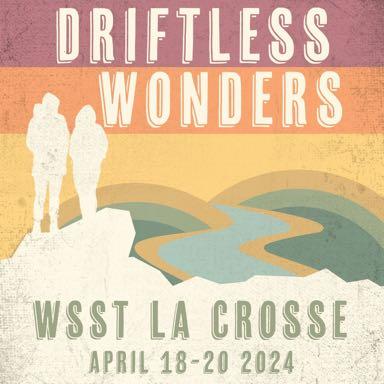
Page 14 Summer WSST Newsletter Brought to you by WSST to you by WSST 2023 Essay
LevelStudent SchoolTeacher Name K-1 Tristan $100 Mary Queen of Saints Catholic Academy Amanda Marcinkus $100 4-5 Brielle $100 Cashton Elementary Paula Niedbalski $100 6-8 Audrey $100 Wisconsin Hills Middle School Laurie Horn $100 9-12 River $100 Benton School District Roxanne Boardman $100
the essay
& the conference
Contest Winners
Watch for
next fall
in the spring!
2023 Essay Contest 2nd Place
Driftless Wonders: 2024 Conference April 18-20, LaCrosse



Our next WSST conference will be held in LaCrosse on April 1820, 2024. We look forward to seeing you there!


Summer WSST Newsletter Page 15 Brought to you by WSST to you by WSST
LevelStudent SchoolTeacher Name 4-5 Brinna $50 Glenn Hills Middle School Lalitha Murali 6-8 Vincent $50 Glenn Hills Middle School Lalitha Murali 9-12 Kari $50 Marion High School Heather Wuske
Language in Science Learning
by Kevin Anderson, DPI Science Guy
As you’re well aware, science has significant language learning demands. Current research suggests vocabulary should be taught differently than I sometimes did as a teacher. Practices such as memorizing and regurgitating definitions or pre-teaching key words have been shown to be less effective in student learning. Instead, all students, and particularly multilingual learners, benefit from careful attention to language development (note, the newer term, “multilingual learner” is used to acknowledge that students we have labeled as “English Learners” are generally learning English and at least one other language). They need rich language environments where they’re introduced to key terms multiple times in multiple modalities (e.g. teacher/peer talk, text sources, and video) and then are expected to use it themselves.
The 2020 WIDA standards include lots of ideas for language usage in science at every grade level (see standard 4 at each grade in this document: https://wida.wisc.edu/sites/default/files/re source/WIDA-ELD-StandardsFramework-2020.pdf). It suggests students should be using language to narrate,
inform, explain, and argue. For example, in kindergarten these standards suggest students use words like “so” and “because” to begin to explain causal relationships. They also suggest using comparisons like “paper floats but rocks sink.”
A serious problem in language learning is that students often seem to understand a term because they can give its definition. With a little probing, it becomes apparent that they’ve really only memorized ideas and words, but they cannot use them productively in new situations. They don’t have a deep understanding at all! Academics have termed this type of learning as the “illusion of explanatory depth” (more details here: https://wisdpiscience.blogspot.com/2019/04/studentsusing-proper-science.html).
Another problematic language strategy that I learned in my teacher preparation program was pre-teaching vocabulary. Again, research suggests this does not work as well as learning the vocabulary through using it and repeatedly connecting to it in context. More details and research in that regard can be found in this STEM Teaching Tool: https://stemteachingtools.org/brief/61. Essentially, research does not suggest testing vocabulary on its own or in any

Page 16 Summer WSST Newsletter
WSST MEMBER SUBMISSIONS
summative way. Our current state standards (like the NGSS) suggest getting rid of this type of DOK 1 work in general. Instead, research suggests that students learn the terms better as they’re used in context to create models, write explanations, design investigations, engage in dialogue, evaluate information, etc. –when they’re doing science. Assessment of these terms can occur in similar ways – as part of sensemaking!
Moving forward, WSST’s Equity and Access Committee will provide an article in each newsletter with an equity and access focus. This is the first in that series. Feel free to reach out with any comments or questions.
Summer Science Professional Development Programs
By Karyl Rosenberg, WSST Historian

At the April Board and Committee chat, the co-chair of WINGS, our current summer professional development program, mentioned that there was a great response in registrations for the upcoming 2023 event. That is always good news since it shows that WSST summer professional development events are having a positive impact. He suggested that I consider researching WSST’s role in a range of summer professional development events over the years. What a great idea, since so many of us have benefitted from these programs-including me, your loyal historian!
I immediately started thinking about
what summer programs WSST has had a role in over the 65 years of our existence. Although there is much more research to be done, I have been able to recall the following programs and their approximate time frames:
Science World 1983-2000
Student and Teacher Components
ESRA
1992-1994
Teacher Component, Earth Sci Focus
WASDI 1994-2001
Lead Teacher Component for Science, Math and Tech Ed teachers
WASDI
1988-2010
Regional Academy Component
Science Futures
2008-2012
Teacher Component
WINGS 2021-present
Teacher Component
Until the advent of Science Futures, the previous programs were not solely produced by WSST; they were sponsored primarily by DPI, NSF grants and the Wisconsin Academy of Sciences, Arts and Letters. WSST members may have had varying degrees of leadership depending upon who and where the original ideas for the programs came from. These are the areas that need more research as I start my series of articles about summer professional development programs. I know that there are many people who participated in these various programs in our organization, so any and all information that you have is welcome! My first area of focus for fall 2023 will be the Science World story. I will say this – without Science World, I might not have had a very long career in science education. One never knows what the impact of a summer program can be.
Summer WSST Newsletter Page 17
Using Chatbots in the Classroom
By Kathy Biernat, MS Zanilu Educational Services, LLC
Artificial intelligence (AI) has the potential to change the way you teach and the way students learn. But is that a good thing?

What is a chatbot?
A chatbot is a type of computer program that is designed to simulate human conversation, typically through text-based or voice-based interfaces. Chatbots use artificial intelligence (AI) and natural language processing (NLP) algorithms to understand and interpret user input, and then generate responses that are intended to be relevant and helpful.
Oh, and by the way, that was written by a chatbot, specifically, ChatGPT.
be used by students to, well, cheat. But first let’s look at what a chatbot can do for YOU as a teacher.
Recently, while supporting a teacher in the classroom, they expressed frustration with the tests provided by the textbook company. They felt that these tests did not align with their teaching style and objectives, so they had to create their own test from scratch. When I suggested using ChatGPT to create the test, the teacher was skeptical but decided to give it a try. In just a minute, we were able to generate a test on atoms and the periodic table for 7th-grade students. While the test was not perfect, the teacher was able to use the generated content as the foundation of the assessment, and make modifications to reflect their teaching style and objectives in just a few minutes.
As an example, I asked ChatGPT to generate a 7th-grade worksheet on biodiversity, and here is part of what was produced:
What is biodiversity?
a. The variety of different species in an ecosystem
b. The total number of organisms in an ecosystem
c. The amount of resources available in an ecosystem
d. The number of different habitats in an ecosystem
What are some threats to biodiversity?
a. Habitat loss and fragmentation
What can it do for me?
Basically, a chatbot can guide a user in their research and understanding of material - but teachers are afraid they can also
b. Climate change
c. Pollution
d. All of the above
Page 18 Summer WSST Newsletter
Need a lab? Here’s how the chatbot began a lab:

The strawberry DNA lab is a fun and educational activity that allows you to extract DNA from strawberries using simple household items. Here are the steps to conduct the lab:
Materials: Fresh strawberries, Ziplock bag, dish soap, salt, water, coffee filter or cheesecloth, rubbing alcohol, clear glass or plastic cup, wooden stick or toothpick
Instructions: Start by collecting fresh strawberries and washing them thoroughly. Place the strawberries in a ziplock bag and use a rolling pin or your hands to mash them up. Add 1 teaspoon of dish soap and 1/4 teaspoon of salt to the bag, and mix well.
And it continued, including offering safety tips. In addition to creating assessments and labs, it can even create lesson plans, find phenomena or suggest a YouTube video. Chatbots can also do calculations, answer student questions, simplify complex topics, generate sources for research, and even design labs. They can be used to write emails, clean up a paragraph, write an IEP, and create a rubric or a template, a vocabulary list or a field trip permission slip. Chatbots can create a set of math problems or writing prompts or translate an article.
But what about…
With all these things it can do, what could be the negatives? While chatbots can be useful in some educational settings, there are also some potential negatives to consider:
• cannot replace personal interaction with a teacher or other students.
Lack of Personal Interaction: chatbots
• chatbots responses are based on their training sets, which might be limited and they may not be able to provide answers to all questions. They may not always provide accurate information or may give incomplete or misleading answers.
Limited Responses/Misinformation:
• reliance on chatbots and other technology can lead to a lack of critical thinking skills and problem-solving abilities in students.
Dependence on Technology: over-
• biased as the data and algorithms used to create them. If the chatbot is based on biased data or algorithms, it may perpetuate stereotypes or discriminatory attitudes.
Potential Bias: Chatbots are only as
And what about cheating? After all, the submitted work of students should be a reflection of their own thinking and processing, rather than being a product of a
Summer WSST Newsletter Page 19
machine learning model hosted on a supercomputer. While a new program has been released that will help detect the use of a chatbot, the best way to reduce cheating is to establish a culture of academic integrity in the classroom and make students aware of the consequences of cheating. You can teach students to use chatbots as a tool - similar to the way they would use a calculator in Math class.
Overall, while chatbots can be a valuable tool in the classroom, they should be used thoughtfully and in conjunction with traditional teaching methods to ensure that students receive a well-rounded and comprehensive education. (At least, that’s what ChatGPT said).
Resources:
Satellite Information Network, 1 March 2023,
https://www.usatoday.com/story/news/ education/2023/03/01/what-teachersstudents-saying-ai-chatgpt-use-classrooms/11340040002/.
USA Today. “ChatGPT creators’ new • tool helps teachers catch students using AI.” USA Today, Gannett Satellite Information Network, 31 Jan. 2023, https://www.usatoday.com/story/news/ education/2023/01/31/chatgpt-creators-new-tool-help-teachers-catchstudents-using-ai/11156604002/
WESTA Summer Field Trip to Yerkes Observatory
The Atlantic. “ChatGPT: The AI
• Writing Tutor That Writes Your College Essays.” The Atlantic, Atlantic Media Company, 22 Dec. 2022, https://www.theatlantic.com/technology/archive/2022/12/chatgpt-ai-writingcollege-student-essays/672371/
• Can Use ChatGPT in the Classroom
HelloTeacherLady. “3 Ways Teachers
According to ChatGPT.”
HelloTeacherLady.com, 3 Dec. 2022, https://www.helloteacherlady.com/blog /2022/12/3-ways-teachers-can-usechatgpt-in-the-classroom-according-tochatgpt
WESTA asks all Earth and Space science teachers to save a little time this summer to join other teachers on a private tour of Yerkes Observatory in Williams Bay, WI.
OpenAI. “GPT-3: Language Models
• are Few-Shot Learners.” OpenAI, 11 Jun. 2020, https://openai.com/blog/chatgpt/.
Fill out this Google Form if you are interested in joining WSST’s committee WESTA (Wisconsin Earth Science Teachers Association) on a teacher field trip there this summer, including collaboration time for any Earth or Space science teacher interested in joining other teachers on a private tour of Yerkes Observatory and valuable information to take back to your classrooms and share with your students, plus an amazing experience and tour! You can also sign up for a possible guided Ice Age Trail hike before the YERKES tour!
USA Today. “What Teachers, Students
• Are Saying About AI ChatGPT Use in Classrooms.” USA Today, Gannett
Page 20 Summer WSST Newsletter
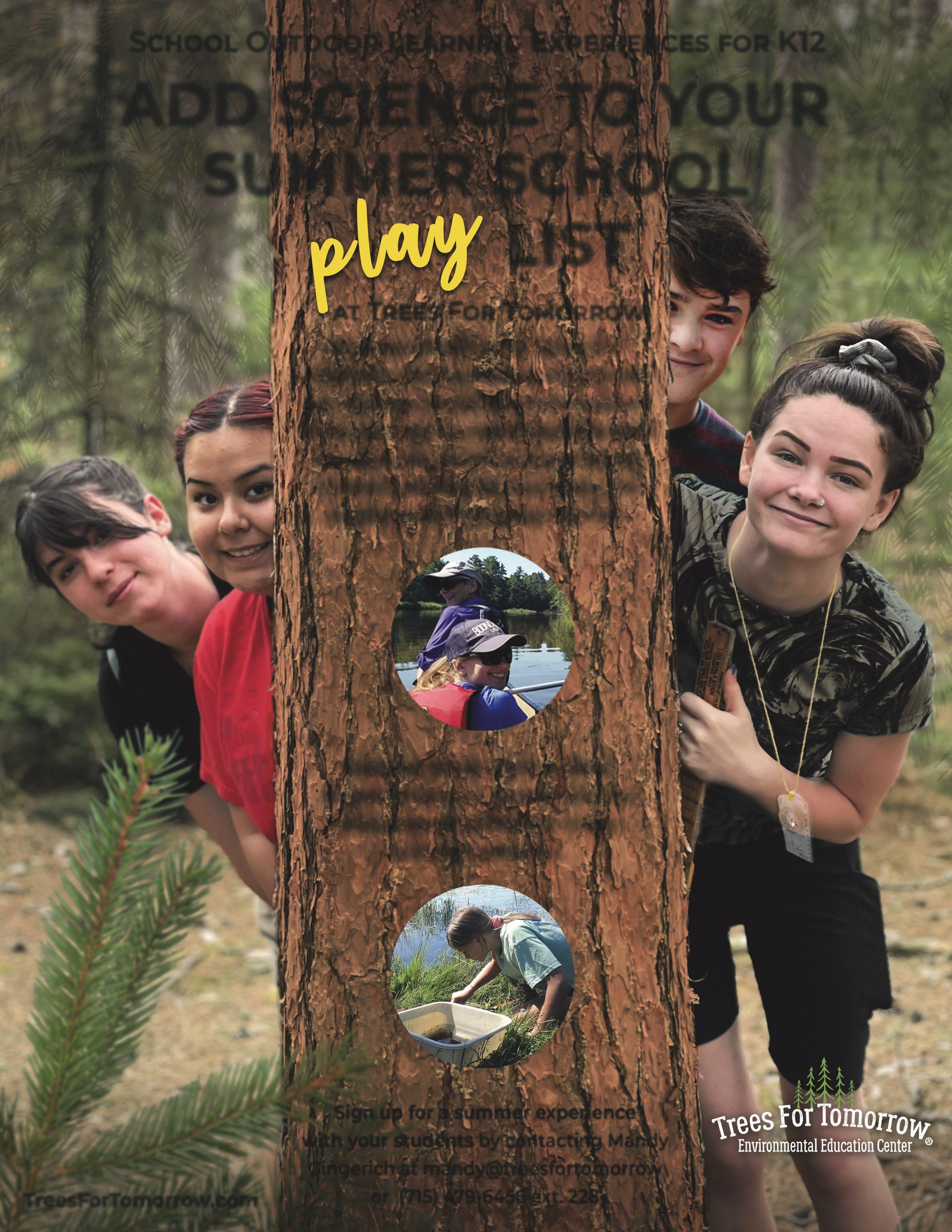



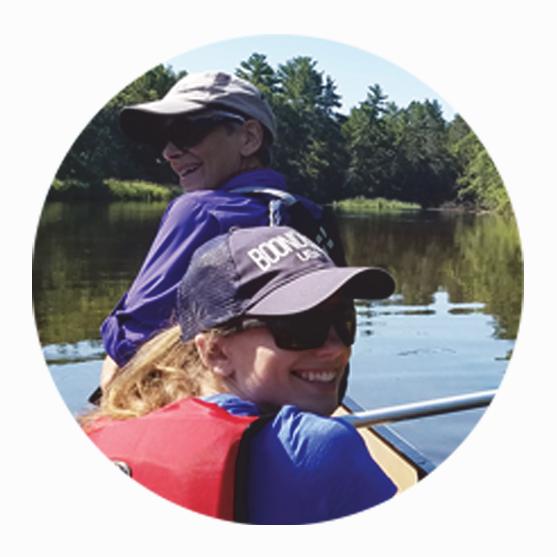
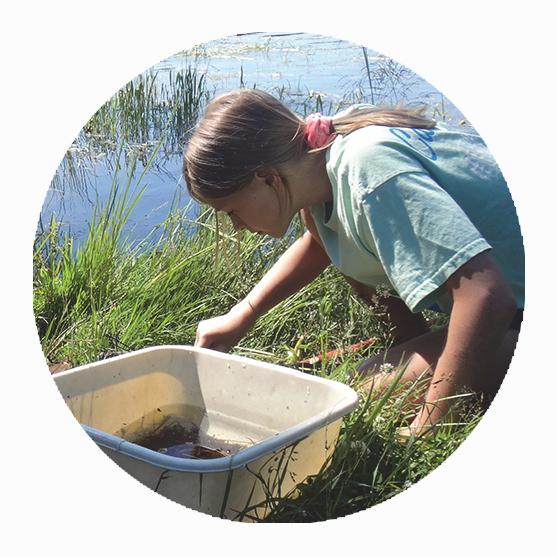



!""#$%&'()*+$%&,,&-')$.)/$01(+**2)$3&)45&,,$6&74$
!"#$%!!"#$%&'(!)#*'!+,!"
&'()*+,'*-"-!.-/0!1232!!!
./)*-!!!4502//!
67898-!!6&9$89!:&9;(!<&%=>?$!!!!"88!<&**&9%>!@8A>=B8!C?9!%=98DB=?$>!
./)*+'$-012#)-!
• "8&B=$E!B7=>!'8&9!=>!&*?$E!B78!9=E7B!C=8*%!=$!B78!F#>D7!G=E7B!H#D;!F*=$%!IJK!

• K**LM?#LN&$LO&B!F#CC8B!C?9!,!7?#9>!>B&9B=$E!@78$!B78!E&B8>!?18$2!FFP!:#**8%!:?9;(!F9&B>(! Q?B%?E>(!N9&$A899'!6&*$#B!N7=D;8$!"&*&%!"&$%@=D78>(!R8E&$!F*&D;!F8&$!:&BB=8>(! 6&B8938*?$(!F?$8*8>>!6=$E>(!S98$D7!S9=8>(!:?B&B?!"&*&%!&$%!N?*8>*&@!
• F?BB?3*8>>!F8T89&E8>!C?9!,20!7?#9>!>B&9B=$E!@78$!B78!E&B8>!?18$2!!UT89!+0!T&9=8B=8>!?C!N9&CB! &$%!H?38>B=D!F889>(!"1=;8%!"8*BV89>!&$%!:81>=!19?%#DB>3++4##2+*/+-"//)#+#'*"#(+5+6##(+/(+ )/25+65$2+
7#8')*(5*'/$+2#520'$#%++!#+"59#+:;+*'-<#*)=8#*+*"#> ?"'0#+)1,,0'#)+05)*@@@@ :*8&>8!D?31*8B8!B78!=$C?93&B=?$!A8*?@2!!H8B&D7!&$%!>8$%!B?-!
!!6""WL<&**&9%>!I&38!
!!DJ?!X&'!"D?*&T=$?!
!!YZZ[\!W?@$*=$8!X%2!
!!O&>B!W9?'(!6]!0,5+/!
!!!!!!!!!!!!!!!"#$%!&%$%'(%)!*+,!-'..!/%!0%#1!2!$+)%!1+!3,&$420%!*+,&!1'$5%106!
S?9!3?98!=$C?!D?$B&DB!9>D&*=,^'&7??2D?3!?9!D&**!.5.L.\/L/[.\2!<&;8!D78D;>!B?!6""W2!
LLLLLLLLLLLLLLLLLLLLLLLLLLLLLLLLLLLLLLLLLLLLLLLLLLLLLLLLLLLLLLLLLLLLLLLLLLLLLLLLLLLLLLLLLLLLLLLLLLLLLLLLLLLL!

6""W!<83A89!Y&38!_>`!
O3&=*!_1*8&>8!19=$B!D*8&9*'`2!!6=**!
A8!#>8%!B?!>8$%!*=$;!C?9!B=D;8B>! :7?$8!
F889!?9!"?%&!F&$%!
Y#3A89!?C!W=D;8B>!aaaaaaaaaaaa!!K3?#$B!O$D*?>8%!aaaaaaaaaaaaaaaaa!

"8*+)*-4'$59$:*))$
SCIENCE NEWS AND OPPORTUNITIES
Partner with Afterschool Educators and Receive Stipends to Collaborate!
Most elementary and middle school youth attend after school and summer programs. These programs, run by school districts, youth organizations, community centers and churches have great potential to include meaningful STEM experiences. These experiences could be aligned with and build on classroom learning. However, the educators leading these programs may not have skills to lead STEM and in many cases, are not confident in their own abilities in STEM. There is little opportunity for communication and collaboration between school-day and out of school time (OST) educators. This grant is designed to help WSST members (classroom teachers) overcome these barriers though collaboration with OST educators. The collaboration could be within their school district or programs in other districts, but should focus on local or regional partnerships.
Goals:
• educators to lead STEM
Empower Out of School Time (OST)
Timeline:
• Notification of awards and Project
Deadline for proposals: May 15, 2023
• Begins: June 5, 2023
• Requirements
Project ends: Dec. 31, 2023
Projects must:
Be a partnership between school-day
• educators and out-of school time educators or program directors
• strengths of in-school and out of school learning
Consider the needs, challenges and
• through professional development
Build capacity of OST educators
Build connections between school day
• STEM learning and OST STEM learning
• setting
Evaluate student learning in the OST
Eligibility: Open to any WSST member. The WSST member must be the lead, but non-WSST members can be involved in the project (and encouraged to join!).We encourage applicants who are reasonably sure they will stay in their district and continue this work for the 24-25 school year.
Implement quality OST STEM pro-
• gramming (after school or summer)
• tion and collaboration between school day and OST educators
Develop strategies for communica-
• school day STEM goals.
Align OST STEM programming with
Grant amount: $1500 (3 grants are available). Checks be distributed directly to grant recipients by June 1, 2023
Target age level: Open to Elementary or Middle School programs
Allowable expenses:
• orate and develop plans for STEM programming and lead PD
Stipends for educators to meet, collab-
Summer WSST Newsletter Page 23
Costs to conduct PD: food, materials, • stipends for participants
STEM materials and curricula - can- • not be over 50% of the project cost (Any materials purchased will remain with the OST program involved)
Expectations:

Grantees must join a community of practice(CoP) that will meet virtually 3 times for one hour each during the grant cycle in May, August and January
Purpose of the CoP:
Wisconsin School Forest Summit ‘23
Put on your hiking shoes, bring your forest management plan and favorite outdoor lessons, pick up your environmental education team, and head to Merrill, Wisconsin, for the LEAF Program’s 2day School Forest Summit ‘23! It’s an event you won’t want to miss and will include networking with inspiring educators, professional development, and recreation at the 748-acre Nels P. Evjue
3
Grantees will provide evaluation data of effectiveness of program. Recipients will be asked to submit a 1-2 page report and are encouraged to include photos and artifacts. Grantees will also be encouraged to present at the 2024 WSST conference. Apply by May 15!
Merrill School Forest from Tuesday, July 25 through Wednesday, July 26. All participants must be associated with a registered Wisconsin School Forest. Summit registration fee: $75. The registration deadline is Monday, July 10, 2023. Space is limited! No onsite registration will be allowed. More information and registration details can be found at https://www3.uwsp.edu/cnrap/leaf/Pages/summit2023.aspx
Funding for the OST grant is provided by The Million Girls Moonshot™, a movement of STEM Next Opportunity Fund and Coordinated through WSST
LEAF, Wisconsin’s K-12 Forestry Education Program, was created to help promote forestry education in Wisconsin in 2001. Since then, LEAF has provided professional development to thousands of Wisconsin’s teachers, provided curriculum to hundreds of thousands of Wisconsin students, and registered over 25,000 acres of school forest land. LEAF is a partnership between the Wisconsin DNR-Division of Forestry and the University of Wisconsin-Stevens Point’s Wisconsin Center for Environmental Education.
Page 24 Summer WSST Newsletter
Provide a common background in 1 strengths and challenges for STEM learning in different settings Provide models for collaboration
2 between in-school and OST educators Provide simple evaluation techniques
for science engagement in OST programs
Encourage sharing of ideas between 4 teams Help teams to navigate problems
5 Learn from this grant cycle to refine 6 future partnership grants
https://doimspp.sharepoint.com/sites/fws-drupal/SitePages/Story-a
Educator Workshop
All Who Teach Children are Invited to … … Explore innovative ways to use an outdoor classroom during this preK-12th grade introductory workshop.
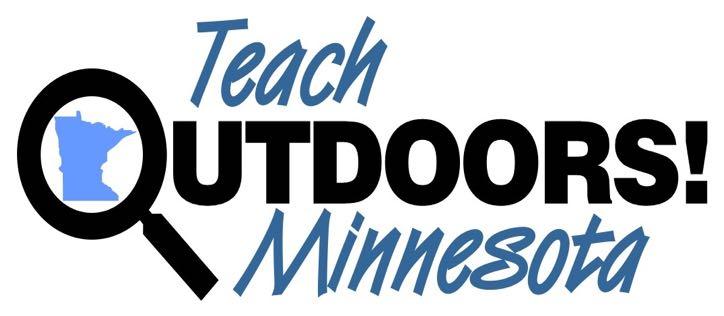
… Gain knowledge and real-world experience in the prairie pothole ecosystem with direct carry-over to any geographic location, any age, and any season.

… Use this simple, practical, and proven approach.
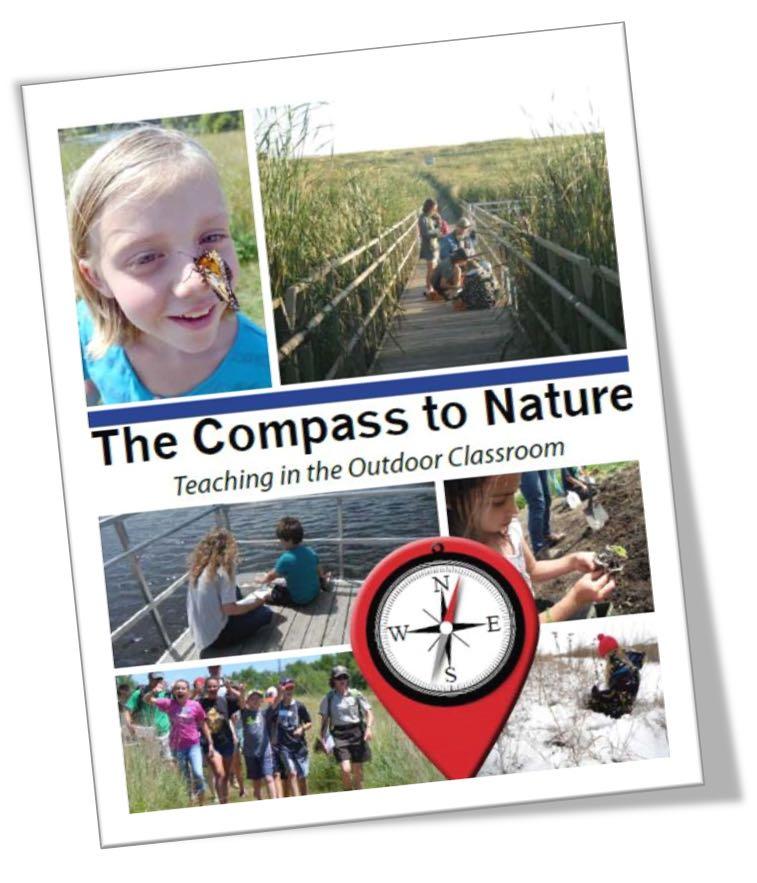
June 26-29, 2023 MON. 8 am - 4:30 pm TUES. and WED. 9 am - 3:30 pm THURS. 7 am – 11 am Receive a Certificate for 23 Clock Hours for Continuing Education Credits Practice Using Science Field Equipment Use the C2N at Your School Cost: $40.00 Dorm Option: No charge Register On-Line www.friendsofprairiewetlands.com PRAIRIE WETLANDS LEARNING CENTER 602 State Highway 210, Fergus Falls MN
Solar Eclipses Are Coming!
By David Prosper
Have you ever witnessed a total solar eclipse? What about an annular solar eclipse? If not, then you are in luck if you live in North America: the next twelve months will see two solar eclipses darken the skies for observers in the continental United States, Mexico, and Canada!

Solar eclipse fans get a chance to witness an annular eclipse this fall. On Saturday, October 14, 2023, the Moon will move exactly in front of the Sun from the point of view of observers along a narrow strip of land stretching across the United States from Oregon to Texas and continuing on to Central and South America. Since the Moon will be at its furthest point in its orbit from Earth at that time (known as apogee), it won’t completely block the Sun; instead, a dramatic “ring” effect will be seen as the bright edge of the Sun will be visible
around the black silhouette of the Moon. The distinct appearance of this style of eclipse is why it’s called an annular eclipse, as annular means ring-like. If you are standing under a tree or behind a screen you will see thousands of ring-like shadows projected everywhere during maximum eclipse, and the light may take on a wan note, but it won’t actually get dark outside; it will be similar to the brightness of a cloudy day. This eclipse must only be observed with properly certified eclipse glasses, or other safe observation methods like pinhole projection or shielded solar telescopes. Even during the peak of the eclipse, the tiny bit of the Sun seen via the “ring” can damage your retinas and even blind you.
Just six months later, a dramatic total solar eclipse will darken the skies from Mexico to northeast Canada, casting its shadow across the USA in a strip approximately 124 miles (200 km) wide, on Monday, April 8, 2024.
This detailed solar eclipse map shows the paths of where and when the Moon’s shadow will cross the USA for the upcoming 2023 annular solar eclipse and 2024 total solar eclipse, made using data compiled from multiple NASA missions. Where will you be? This map is very detailed, so if you would like to download a larger copy of the image, you can do so and find out more about its features at: https://svs.gsfc.nasa.gov/5073 Credits: NASA/Scientific Visualization Studio/Michala Garrison; eclipse calculations by Ernie Wright, NASA Goddard Space Flight Center.

Page 26 Summer WSST Newsletter
While protection must be worn to safely observe most of this eclipse, it’s not needed to witness totality itself, the brief amount of time when the Moon blocks the entire surface of the Sun from view. And if you try to view totality through your eclipse viewer, you won’t actually be able to see anything! The Moon’s shadow will dramatically darken the skies into something resembling early evening, confusing animals and delighting human observers. You will even be able to see bright stars and planets - provided you are able to take your eyes off the majesty of the total eclipse! While the darkness and accompanying chilly breeze will be a thrill, the most spectacular observation of all will be the Sun’s magnificent corona! Totality is the only time you can observe the corona, which is actually the beautiful outer fringes of the Sun’s atmosphere. For observers in the middle of the path, they will get to experience the deepest portion of the eclipse,
which will last over four minutes - twice as long as 2017’s total solar eclipse over North America.

While some folks may be lucky enough to witness both eclipses in full – especially the residents of San Antonio, Texas, whose city lies at the crossroads of both paths – everyone off the paths of maximum eclipse can still catch sight of beautiful partial eclipses if the skies are clear. The Eclipse Ambassadors program is recruiting volunteers across the USA to prepare communities off the central paths in advance of this amazing cosmic ballet. Find more information and apply to share the excitement at eclipseambassadors.org. NASA has published a fantastic Solar Eclipse Safety Guide that can help you plan your viewing at bit.ly/nasaeclipsesafety. And you can find a large collection of solar eclipse resources, activities, visualizations, photos, and more from NASA at solarsystem.nasa.gov/eclipses
of the Sun is still visible as the ring around the Moon. On the right,
can see the Sun’s wispy corona, visible only during totality itself, when the Moon completely – or totally - hides the Sun from view. A total solar eclipse is only safe to view without protection during totality itself; it is absolutely necessary to protect your eyes throughout the rest of the eclipse! Credits: Left, Annular Eclipse: Stefan Seip (Oct 3, 2005). Right, Total Eclipse, NASA/Aubrey Gemignani (August 21, 2017)
This article is distributed by NASA’s Night Sky Network (NSN). The NSN program supports astronomy clubs across the USA dedicated to astronomy outreach. Visit nightsky.jpl.nasa.gov to find local clubs, events, and more!
Summer WSST Newsletter Page 27
Photos of an annular total solar eclipse (left) and a total solar eclipse (right). Note that the annular eclipse is shown with a dark background, as it is only safe to view with protection – you can see how a small portion
you
WSST Newsletter
192 Depot Road
Cambridge, WI 53523
ADDRESS SERVICE REQUESTED
Volume 64, No. 4
Published in Appleton, Wisconsin
Editing & Layout: Brian Bartel
Publisher: Kevin Niemi
DUES EXPIRE ON DATE PRINTED
Submissions to the Newsletter
If you wish to contribute to the WSST Newsletter or place an advertisement, please forward items to Newsletter Editor, Brian Bartel, Morgan Building, 120 East Harris St, Appleton, WI 54911. The preferred method of submission is by e-mail at newsletter@wsst.org. Please send as text or Microsoft Word Document.
For advertising rates, visit www.wsst.org/newsletter
Join us or check your account
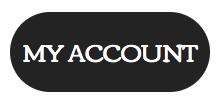
Stay informed and get connected with the largest professional society for teachers of science in Wisconsin. Regular Membership in WSST is only $25 per year, Retired teacher annual membership is $15.00, and Student annual membership is $10.00. Visit www.wsst.org/join to join today.
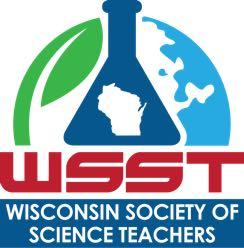
To check on your WSST account, change your address or school, visit www.wsst.org and click on My Account.
WSST Calendar
WSST Summer Board Meeting
Prairie Springs Environmental Ed Center
Genesee Depot, WI June 20-22, 2023
WSST Conference 2024
LaCrosse
2022-2023
April 18-20
Newsletter Deadlines
Fall: Friday, August 26, 2022
Winter*: Friday, November 11, 2022
Spring*: Friday, January 20, 2023
Summer*: Friday, April 7, 2023
*These will be digital issues only
More WSST Information can be found at www.wsst.org










































































